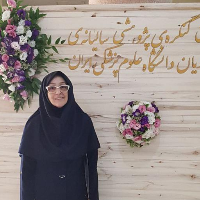Application of Balint Intervention Groups in Professional Communication in Medical Science Education
Dear Editor The purpose of this research is to familiarize professors and students of medical sciences with the concept of Balint groups. Michael Balint created the Balint groups in 1957 in order to better understand the relationships between family doctors and their patients (1, 2). According to Michael Balint, in addition to medical education, doctors should also have proper communication skills and characteristics with patients (2, 3). Balint groups are one of the effective methods to improve therapist-client relationships in the form of 90-minute sessions, held weekly to monthly, over several years (4, 5). Each Balint group consists of 6 to 10 members with one to two leaders or facilitators. In these groups, usually, one person presents the desired topic, which can be the condition of a patient, in a period of 3 to 5 minutes, and the desired topic is discussed for an hour or more. All topics discussed in the group are confidential, and the leader emphasizes creating a safe environment that is based on trust and acceptance. The members of the group take turns expressing their opinions on the topic, and finally, the group leader summarizes the opinions, and the final result is obtained (6). Doctors in these groups have meetings to discuss their performance, the psychological aspects of their work, and the relationship between the doctor and the patient (1, 7). One of the goals of Balint groups is to increase one's knowledge by reporting on one's patient, discussing the topic in a safe environment, finding one's mistakes due to the feedback of others, and correcting one's emotional experiences in relation to the patient. Balint group members reveal their innermost feelings and experiences in order to be able to talk about a topic. In this way, members share their content with other group members in a non-judgmental environment. The group members benefit from the feedback of others and compare their experiences with the contents of other colleagues (8). Group discussions about feelings have the benefit of making people more aware of their feelings, thus enabling them to analyze and organize their information. Emotions and feelings in clinical work can be useful for patients if they are tolerated and understood by the doctor (9). Due to the rapid development of technology, the improvement of educational methods, and attention to the needs of patients, the importance of the Balint group should be given more attention due to the change in demographic characteristics (1). As a result, Balint groups have gradually been emphasized in medical education (10). In Balint groups, with the participation of students, the duration is shorter than in normal Balint groups, and the leader may be more active in describing their experiences (11). The presence of students in Balint groups leads to the development of empathy skills among medical students (12). For example, students are placed in a real and uncomfortable clinical situation to observe their reactions and increase their empathetic abilities, thus becoming more patient-centered (12, 13). Studies show that doctors who were part of Balint groups during their student period have a higher sense of control and satisfaction in their work environment. Also, these groups improve the skills of giving bad news in students (11). By attending these classes, students can use the professors' experiences with problematic issues in dealing with patients, which they have not observed during their studies. Improving doctor-patient relationships, reducing job burnout, and managing stress and anxiety are other benefits of participating in Balint groups (1). Medical schools should create an environment for students that will lead to progress in their socialization process (14). Therefore, it is suggested that Balint groups be used to improve teacher-student relationships in medical education.
-
The Role of Leadership in Nursing: A Meta-Synthesis Study
Fatemeh Talebian, Gholamreza Mahmoodi*, Leila Jouybari
Journal of Nursing Education, -
Comparing Iranian and Duke University's Master of Nursing Education Programs in Geriatrics: A Comparative Study
Hamideh Mancheri, Gholamreza Mahmoodi-Shan, Leila Jouybari, Malihe Kabusi*
Journal of Research IN Medical Education, -
Application of artificial intelligence in nursing and its ethical aspects
*, Zahra Sheibani, Akram Sanagoo, Leila Jouybari
Education & Ethics In Nursing, -
Metaverse Applications in Medical Education
A. Moradi, Z .Sheibani, A .Sanagoo*, L. Jouybari
Journal of Research IN Medical Education,




